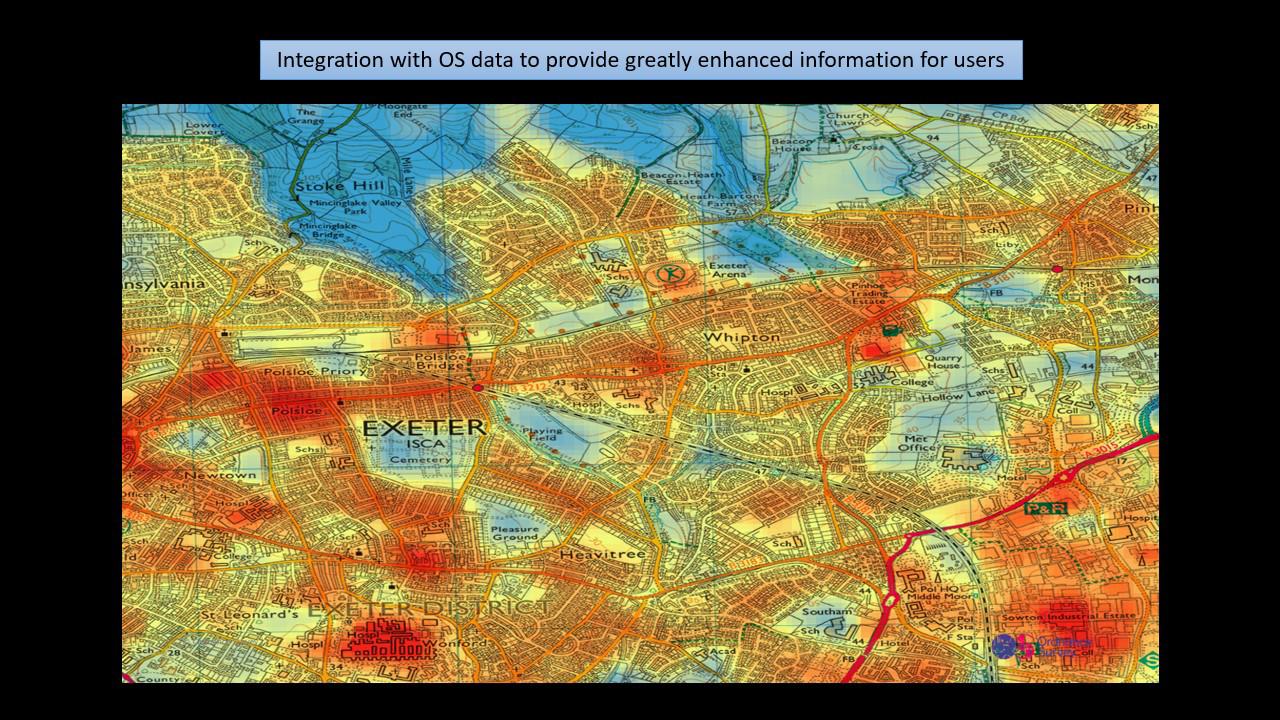Britain is heating up – how heat mapping can support change
We’re approaching the end of one of the hottest years on record, evidence that climate change is happening more rapidly and with greater intensity than predicted. The UK saw air temperatures surpass 40°C for the first time ever this summer, with temperatures rising to around 20°C this month meaning Brits experienced t-shirt and shorts weather in November!
In a report by Ordnance Survey, heat-related disasters have high economic costs, estimated to be between £323 million to £9.9 billion per year by the 2050s. The effects of climate change are not just the rise in global temperatures but the extreme weather events that occur such as droughts, floods, and heatwaves, which are among the most dangerous of natural hazards. The likelihood of a major unprecedented heatwave event in the next decade is more than likely.
The UK is leading the way in climate adaptation by using space data to monitor and understand the effects of climate change. More than half of key climate data comes from space. The government has recently announced up to £200 million of funding to invest in the Earth observation sector to meet space and net zero ambitions.
In a project backed by the UK Space Agency, Ordnance Survey is collaborating with the National Centre for Earth Observation (NCEO) using satellite data to monitor and map heat in locations at greatest risk. The aim is to provide meaningful insights for policymakers to manage the impacts of climate change in hot spots across the UK and further afield.
Listen to experts from OS and NCEO talk in depth about the project in our new podcast below.
Using satellite data to monitor and map heat
The Earth observation data will use land surface temperature data from thermal infrared sensors in space. This will reveal locations that may show greater risk to human health and enable better planning and ‘climate-adaptive’ policies to deal with extreme weather events.
Data from the project will deliver insight so that governments will be able to protect vulnerable communities by identifying cool spaces or areas where safe zones are needed, optimise tree planting, and explore how planning could mitigate risk and ensure the land management measures being proposed will be resilient to future change, from urban planning to rural planning, and protecting our people, livestock, and crops.
In cities, urban heat islands occur where the land surface is densely covered with roads, pavement, buildings, and other surfaces that absorb and retain heat. This effect increases energy costs, air pollution levels, and heat-related illness and fatalities. Using geospatial data, planners will be able to identify suitable buildings that require adaption, such as retrofitting green or cool roofs, and greenspaces which could be used for heat pumps and as low carbon heat sources to help the UK achieve its climate targets.
Donna Lyndsay, Innovation Lead said: “Geospatial data is already supporting how we respond to climate change and the drive towards net-zero. By working collaboratively with the UK Space Agency and leading scientists, OS is using its mapping capabilities and trusted data to identify areas at greatest risk from global warming.

“Sifting through data can be a minefield and so it’s our mission to empower public bodies to meet their climate action plans with meaningful insights and evidence, ensuring high quality scientific data is in the hands of the right people. With heat events becoming more regular, and more intense around the globe, the demand for Earth observation and geospatial data is likely to grow in 2023 as both datasets are vital to reducing the effects of climate change. You’ve got to see it and understand it before being able to implement change, which is why our data and predictive analysis must be at the heart of any solution.”
Mark Tabor, Principal Production Consultant said; “On its own Earth observation has no context but add a map and suddenly it has the context to shape change, as evidenced by the UK Space Agency project. Making the combined data set easily accessible with our technical expertise can lead to informed decisions and help protect the most vulnerable communities, infrastructure and environments, and enable the success of climate solutions to be monitored and best practice shared.”
Using satellites to map ground heat
Mark Tabor, Principal Production Consultant said; “On its own Earth observation has no context but add a map and suddenly it has the context to shape change, as evidenced by the UK Space Agency project. Making the combined data set easily accessible with our technical expertise can lead to informed decisions and help protect the most vulnerable communities, infrastructure and environments, and enable the success of climate solutions to be monitored and best practice shared.”
Find out more information you can watch this short video.

Our highly accurate geospatial data and printed maps help individuals, governments and companies to understand the world, both in Britain and overseas.
Taking climate action
How space-based heat data can power adaptation planning